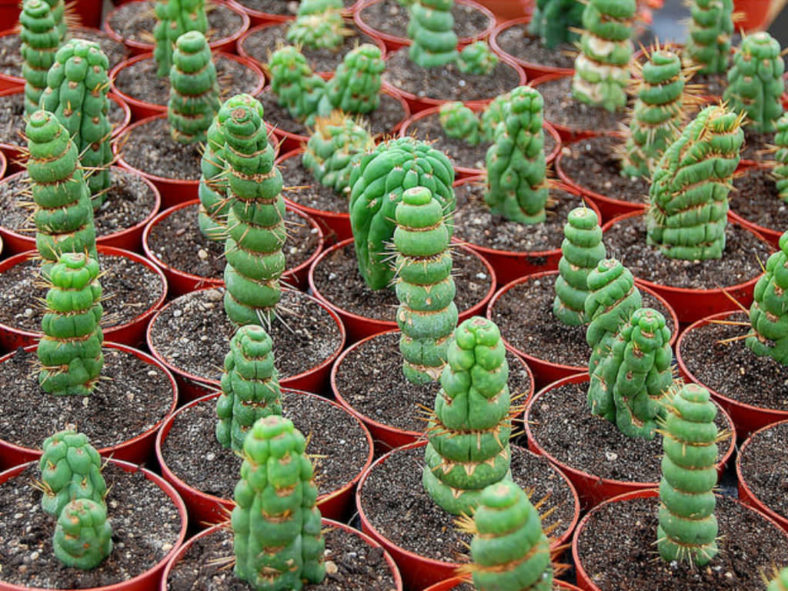Eulychnia is a genus of candelabra or tree-like cacti. It has 6 to 9 species, depending on the authority. These relatively large plants reach 23 feet (7 m) high and can survive very hot conditions up to 122°F (50°C). Furthermore, these cacti can also survive in some of the world's driest places, such as the Atacama Desert.
The stems are covered with long spines arranged in clusters on tuberculate ribs. The floral tubes are round in shape and covered in spines, wool, scales, or all three. When the flower opens, it resembles a ball popped open on one side.
Eulychnias are uncommon in cultivation, and only collectors with a specific interest in the genus seem to grow them.
Growing Conditions
Light: Eulychnias require full sun or light shade for compact growth and strong-colored spines. They tend to bronze in intense sunlight, encouraging flowering and heavy spine production. Light shade can be helpful on the hottest summer days.
Water: These cacti require light but regular watering from spring to fall. Let the soil dry between waterings, and then keep it dry in winter.

Temperature: Eulychnias need to be kept in a cool place during winter rest. If kept on the dry side during cold weather, they are resistant to light frost. They are hardy down to 28°F (-2°C) in short periods.
Soil: These cacti need a well-draining cactus soil mix. If the soil mix is too rich, they can become too elongated.
Fertilizer: Feed with a high potassium fertilizer in summer.
Propagation
Eulychnias can be propagated from seeds or cuttings.
Pests and Diseases
These cacti may be attractive to various pests. Still, plants in good condition should be nearly pest-free.
Links
- Back to genus Eulychnia
- Succupedia: Browse succulents by Scientific Name, Common Name, Genus, Family, USDA Hardiness Zone, Origin, or cacti by Genus